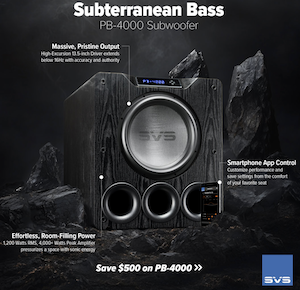Frank Lautenbach
Registered
Thread Starter
- Joined
- May 31, 2018
- Posts
- 2
More
- Preamp, Processor or Receiver
- miniDSP 2x4
- Main Amp
- Yamaha RX-V781
- Front Speakers
- Dynaudio Excite
- Center Channel Speaker
- Dynaudio Excite
- Surround Speakers
- Dynaudio Excite
- Subwoofers
- 4x SVS SB-12 NSD
- Screen
- Stumpfl
- Video Display Device
- Sony VPL-HW45
Hi guys,
I am using REW for a while now and successfully optimized low-end frequencies in my HT in combination with the awesome MSO multi-subwoofer optimization tool. I take measurements @about 75db as recommended, however, I am wondering if the sine sweep can potentially damage tweeters because the sweep concentrates complete energy at a single frequency at a time while real music or e.g. pink noise distributes energy across a wide range. Is it safe to run sweeps up to 20kHz? If yes, is there a maximum length of the sweep that should not be exceeded? By the way, is it correct that REW internally sweeps up to the double of the configured frequency?
Thanks for your help!
I am using REW for a while now and successfully optimized low-end frequencies in my HT in combination with the awesome MSO multi-subwoofer optimization tool. I take measurements @about 75db as recommended, however, I am wondering if the sine sweep can potentially damage tweeters because the sweep concentrates complete energy at a single frequency at a time while real music or e.g. pink noise distributes energy across a wide range. Is it safe to run sweeps up to 20kHz? If yes, is there a maximum length of the sweep that should not be exceeded? By the way, is it correct that REW internally sweeps up to the double of the configured frequency?
Thanks for your help!












